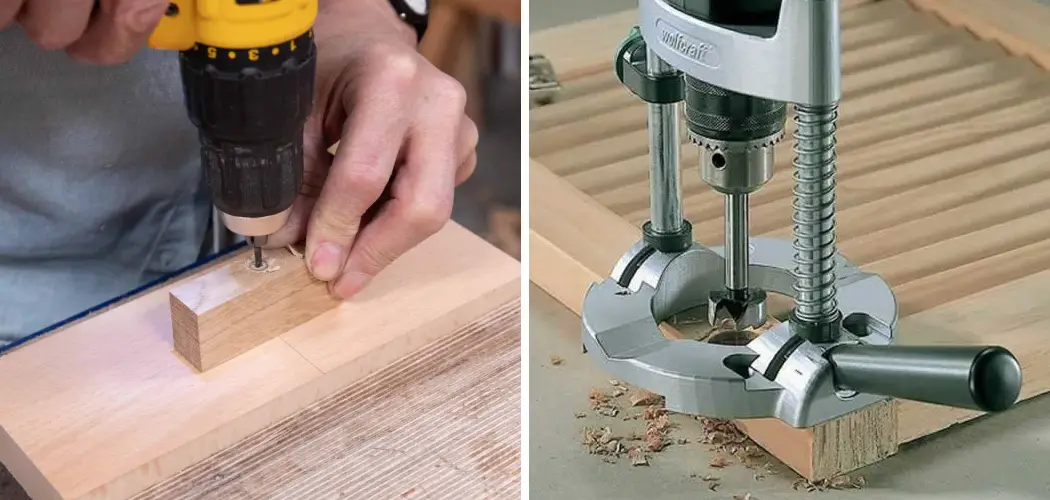Drilling long, straight holes in wood is a fundamental skill for woodworkers, DIY enthusiasts, and anyone involved in carpentry projects. Whether you’re crafting furniture, installing shelves, or building structures, the ability to bore precise and straight holes is essential.
However, achieving this requires the right techniques and tools, as drilling crooked or uneven holes can compromise the structural integrity of your work.
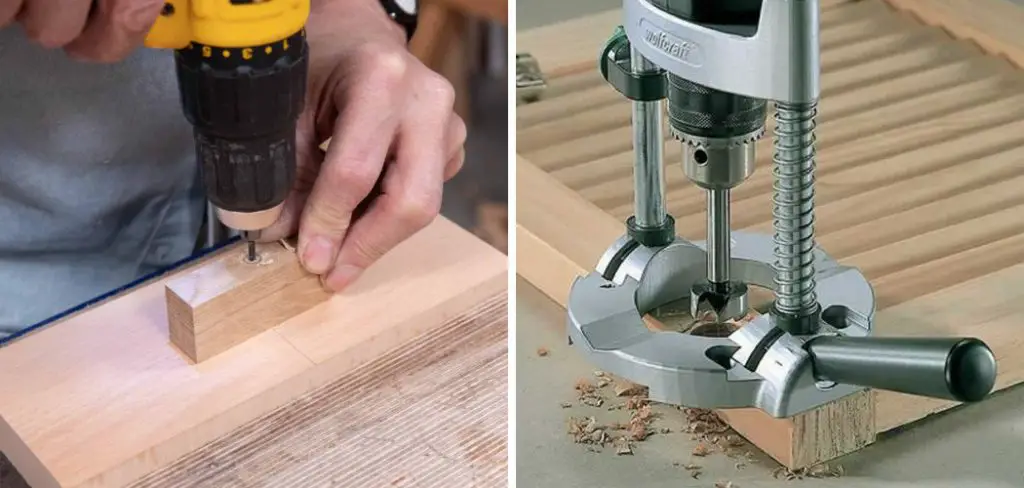
In this comprehensive guide, we will delve into how to drill long straight holes in wood. From selecting the appropriate drill bits and setting up the drilling apparatus to mastering the essential drilling methods, we’ll equip you with the knowledge and expertise to tackle woodworking projects with confidence.
Whether you’re a novice looking to improve your skills or a seasoned woodworker seeking a refresher, this guide will help you produce clean, accurate, and professional-looking results in your woodworking endeavors.
Importance of Drilling Long Straight Holes in Woodworking Projects
Woodworking is a beloved hobby to many, and it involves creating beautiful pieces of furniture or other decorative items using wood as the primary material. For any woodworking project, precision is key, and this includes drilling long straight holes in wood. Whether you are a beginner or an experienced woodworker, knowing how to drill long straight holes is essential for achieving professional-looking results.
One of the main reasons why drilling long straight holes is important in woodworking projects is the functionality of the piece being created. For instance, if you are making a bookshelf, it is crucial that all the shelves have perfectly aligned holes for the support rods.
Otherwise, your books may not sit evenly on the shelves, and this could be frustrating and even cause damage to your books over time. Similarly, if you are making a cabinet or drawer, having unevenly drilled holes could affect the functionality and overall appearance of the piece.
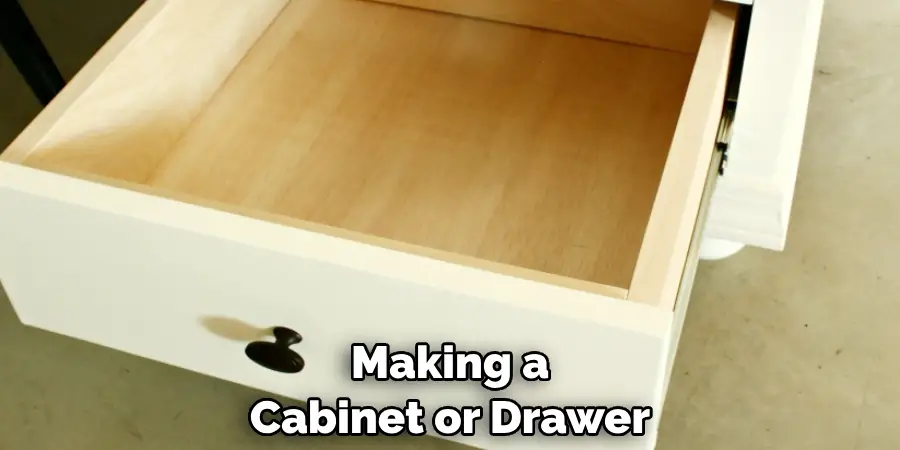
Another reason why drilling long straight holes is important in woodworking projects is for aesthetic purposes. When creating furniture or other decorative items, it is essential to have clean and precise lines. This means that all the holes should be perfectly aligned and straight to achieve a professional finish.
10 Methods How to Drill Long Straight Holes in Wood
1. Use a Drill Press
One of the most reliable methods for drilling long, straight holes in wood is to use a drill press. A drill press is a machine that uses a rotating spindle and adjustable table to hold the workpiece in place while it is being drilled. With a drill press, the user can precisely control the speed, depth, and angle of the hole being drilled. This ensures that each hole will be perfectly straight and consistent in size and shape.
2. Use a Doweling Jig
Another effective way to drill long, straight holes in wood is to use a doweling jig. A doweling jig is a tool that holds two pieces of wood together while allowing them to be securely clamped while drilling. The jig also allows for precise placement of the hole so that it will be perfectly centered and aligned with other holes on the same piece of wood.
3. Use an Auger Bit
Using an auger bit is another great way to drill long, straight holes in wood without much effort or skill required. An auger bit has a spiral flute on its shank, which helps guide it through the material as it drills into it. This makes it easier to keep the hole straight and prevents wobbling or misalignment as you drill through your workpiece.
4. Use Self-Centering Bits
Self-centering bits are another useful tool for drilling long, straight holes in wood quickly and accurately. These bits have small points at their tips which help them stay centered in the material as they are being used. This eliminates any guesswork when trying to align your hole with other parts of your project or when trying to make sure your hole is perfectly symmetrical on both sides of your workpiece.
5. Use Forstner Bits
Forstner bits are specially designed bits that are perfect for drilling clean, accurate holes through thick pieces of wood such as hardwood or plywood panels.
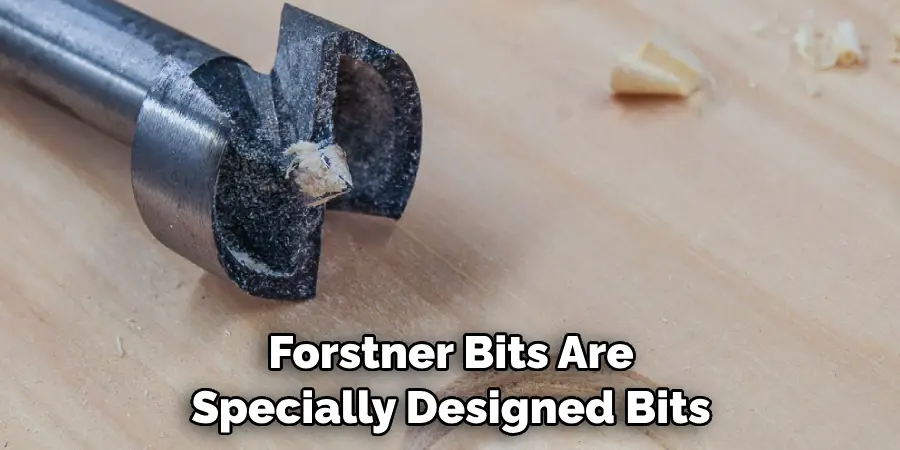
The unique design of these bits allows them to cut away material from around their edges so that they leave behind perfectly circular holes with smooth edges on both sides of your workpiece without leaving any splintering or tear-out marks like traditional twist drills do when used on thicker materials like hardwoods or plywood panels.
6. Use Boring Machines
Boring machines are specialized tools designed specifically for drilling large-diameter holes into thick pieces of wood, such as hardwood or plywood panels, with ease and accuracy every time you use them.
They come equipped with adjustable fences, which allow you to set up multiple different-sized holes depending on what type of project you’re working on without having to move your workpiece around constantly during setup which saves time and reduces fatigue during longer projects.
Plus, boring machines come equipped with variable speed settings, so you can adjust how fast or slow you want your bit to turn depending on what type of material you’re working with.
7. Use Spade Bits
Spade bits are ideal for quickly drilling large-diameter, shallow holes into soft woods such as pine, fir, cedar, etc. The wide blades on these types of bits allow them to easily remove large amounts of material at once while still maintaining accuracy throughout each pass.
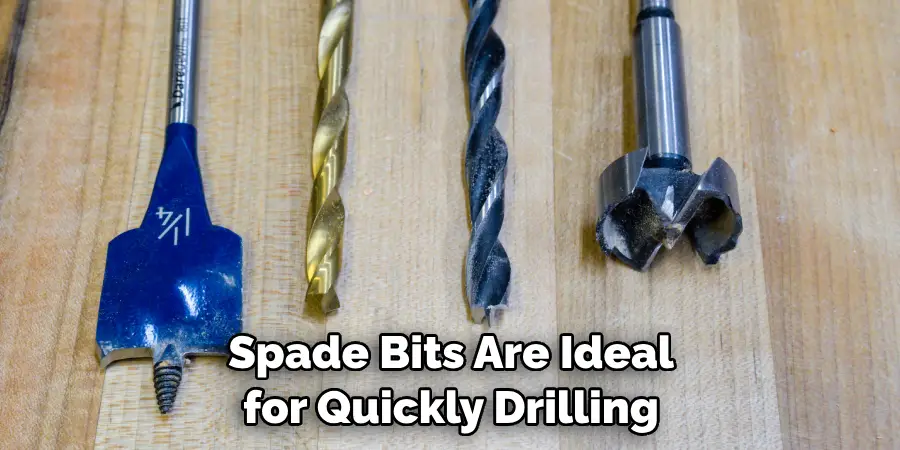
Plus, spade bits come equipped with adjustable depth stops so you can easily set up how deep you want each hole before starting which helps reduce mistakes during repetitive tasks.
8. Use Countersink Bits
Countersink bits are specially designed for creating countersunk screw heads when driving screws into wood. These types of bits feature angled cutting edges at their tips which help create tapered recesses around each screw head, allowing them to sit flush against whatever surface they’re being attached to without sticking out.
Countersink bits also come equipped with adjustable depth stops so you can easily set up how deep each recess needs to be before starting, which helps ensure all screw heads end up sitting at the same height after installation.
9. Use Step Drills
Step drills are multi-purpose tools designed specifically for creating multiple different-sized holes within one single pass through any type of material, including metal, plastic, and even glass if necessary. These types of drills feature several different-sized cutting edges along their shanks which allow them to quickly create various-sized holes depending on what size step drill bit was chosen prior to beginning operation.
Step drills also come equipped with adjustable depth stops so you can easily set up how deep each hole needs before starting, which helps reduce mistakes during repetitive tasks.
10. Use Hole Saws
Hole saws are specialized tools designed specifically for creating large-diameter circular openings within any type of material, including metal, plastic, and even glass, if necessary. They feature sharp teeth around their edges which help them easily cut through even the toughest materials without much effort or skill required.
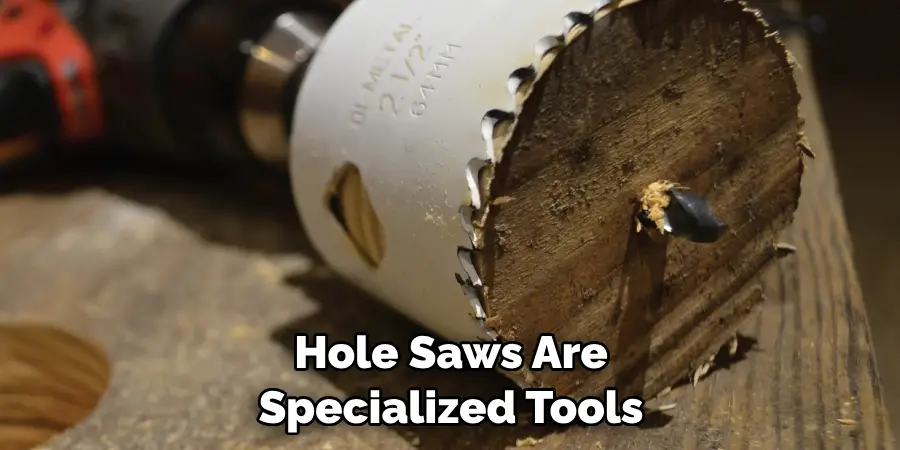
Plus, hole saws come equipped with adjustable depth stops so you can easily set up how deep each circle needs to be before starting, which helps reduce mistakes during repetitive tasks.
Things to Consider When Drilling Long Straight Holes in Wood
When it comes to woodworking, drilling long straight holes can be a challenging task. Whether you are a beginner or an experienced woodworker, there are several factors that should be considered before attempting to drill these types of holes. In this guide, we will discuss some important tips and tricks that will help you achieve perfectly straight holes every time.
Proper Equipment
Having the right tools for the job is crucial when it comes to drilling long straight holes in wood. One of the most important tools you need is a high-quality drill press with adjustable speed settings. This will allow you to control the speed of the drill and prevent splintering or tear-out on your workpiece. Additionally, using sharp drill bits specifically designed for woodworking will ensure clean and precise holes.
Marking and Measuring
Before drilling, it is important to properly mark and measure where the holes should go. This will help you ensure that all of your holes are evenly spaced and straight. You can use a ruler or measuring tape to mark the positions of the holes on your workpiece, or you can create a drilling template by drawing lines on a piece of scrap wood and using it as a guide for your drill bit.
Proper Technique
To achieve straight holes, it is essential to use proper drilling techniques. Start by aligning your drill bit with the marked spot on your workpiece and gently pressing down as you begin drilling. Applying too much pressure can cause the drill bit to wander and create an uneven hole. It is also important to keep the drill at a 90-degree angle to the workpiece throughout the drilling process for perfectly straight holes.
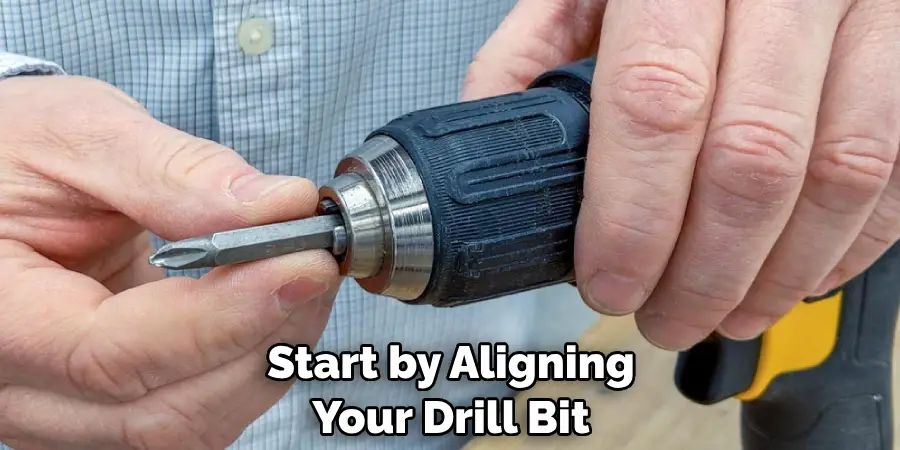
Some Common Mistakes When Drilling Long Straight Holes in Wood
Drilling long straight holes in wood can be quite challenging, especially for beginners. It requires precision and attention to detail to achieve a smooth and accurate hole. However, many people make some common mistakes when trying to drill long straight holes in wood, which can result in crooked or rough holes. In this section, we will discuss these mistakes and how you can avoid them.
Not Using a Drill Guide
One of the most common mistakes beginners make when drilling long straight holes in wood is not using a drill guide. A drill guide is a tool that helps to keep the drill bit perpendicular to the surface of the wood, ensuring a straight and accurate hole. Without a guide, it is easy for the drill to tilt or wander off course while drilling, resulting in an uneven hole.
Using the Wrong Drill Bit
Another mistake that people make is using the wrong type of drill bit for the wood they are drilling. Different woods require different types of drill bits, depending on their hardness and density. For example, a spade bit may work well for softwoods like pine, but it may struggle to drill through hardwoods like oak or maple.
Not Marking the Hole Location
It is crucial to mark the exact location of the hole before drilling, especially when working on a project that requires multiple holes. Without proper markings, it is easy for the drill to drift off course and create uneven or misaligned holes. Take your time and use a ruler or square to mark the precise location of each hole before starting to drill.
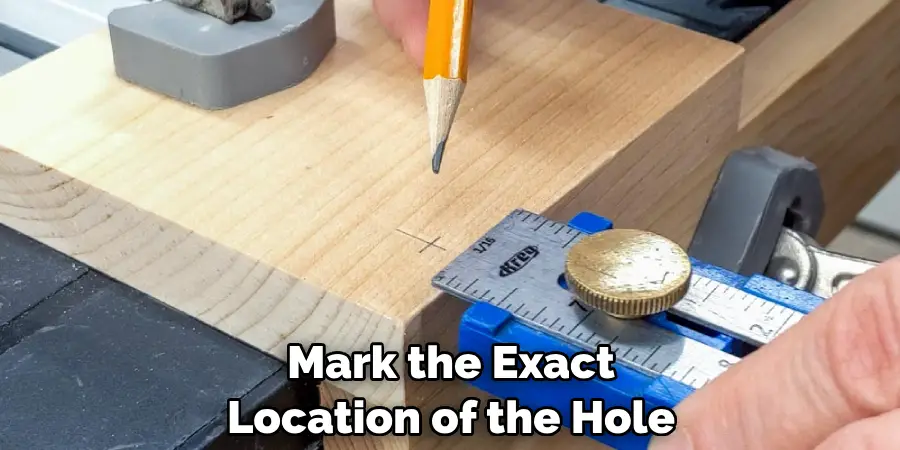
Conclusion
After learning how to drill long straight holes in wood, you are now equipped with the knowledge and skills needed to do this job confidently. It is important to remember that drilling into wood requires patience and precision.
Don’t rush this job – take your time and consider the placement of the hole prior to beginning. Use a tape measure for measurements, select the right drill bit size and have a jig ready for extra support if needed.
By following these tips, you’ll be able to create beautiful projects with confidence! You can start by exploring new types of wood or trying out new tools and techniques. So take your drills out of storage, give it a spin, and start creating our own masterpiece today!

